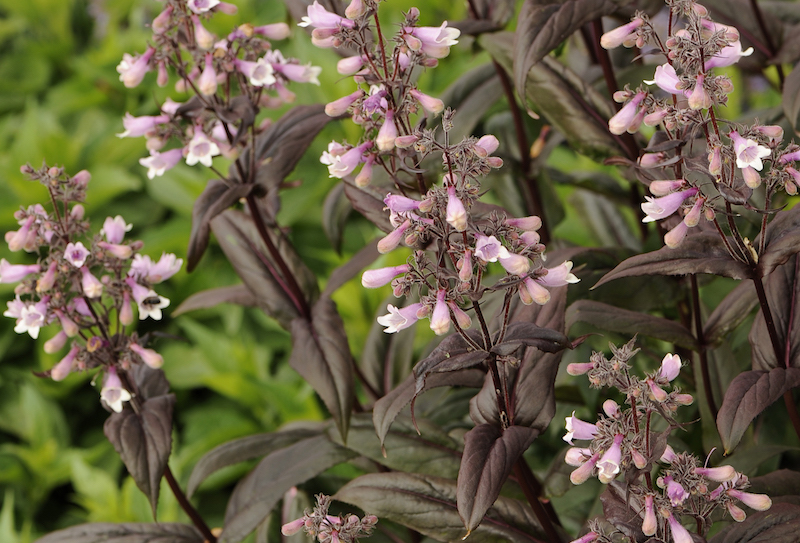Beardtongue is a flowering perennial that is not prone to specific diseases but can still be susceptible to common ailments. Proper care of Beardtongue can help keep the plant healthy and thriving and often prevents common diseases. Early detection is often the best way to handle problems with the plant, so knowing the signs of common diseases is the first line of defense.
- Powdery Mildew
- Leaf Spots

Beardtongue Powdery Mildew
Powdery mildew is a fungal infection that impacts foliage. With time, the mildew will engulf the entire leaf and spread to the rest of the plant. In advanced cases, powdery mildew will result in leaf drop and stunted growth. Like most mildews, this disease develops when plants are crowded, and there is limited airflow.
Identifying Powdery Mildew
Large areas of splotchy white areas are the common indicator of this disease. The plant will develop a cloudy film over infected leaves.
Treating Powdery Mildew
Treat powdery mildew by removing foliage to increase air circulation around the plant. Removed leaves must be destroyed to prevent the mold spores from spreading. Prevent powdery mildew by leaving plenty of space around each perennial when planting. Air should be able to circulate around each Beardtongue. Plants that prefer bright sun, like Beardtongue, are less likely to develop mildew when they receive adequate light.
Beardtongue Rust
Rust is a fungal disease that impacts a variety of plants, including Beardtongue. Rust can quickly spread throughout a plant and infect neighboring plants. Infected leaves will eventually wither and fall off the plant. Leaf loss can result in stunted growth and, in extreme instances, kill the plant.
Identifying Rust
Rust on Beardtongue appears as raised reddish-orange spots. The spots are spores caused by fungus.
Treating Rust
Treat rust on Beardtongue by removing the infected leaves. Destroy infected leaves to prevent the spores from spreading. Removing infected leaves will allow for increased airflow, which will treat the problem in the short term. Avoid overhead watering and splashing the foliage, which can spread the spores. Prevent Beardtongue rust by properly spacing plants when planting. Plenty of space allows for airflow, which reduces dampness and instances of rust. Fungicides can also be used to treat rust on Beardtongue.
Beardtongue Disease Chart
|
Disease |
Identifying |
Treating |
|
Powdery Mildew |
Yellow or white spots on leaves |
Proper air circulation |
|
Rust |
Dark spots on leaves |
Fungicides & air circulation |
Sources: "Penstemon (Penstemon)." Connecticut State - The Connecticut Agricultural Experiment Station. portal.ct.gov
 |
Author Alison Cotsonas - Published 05-03-2023 |
